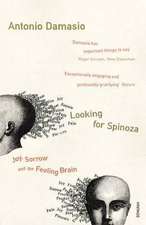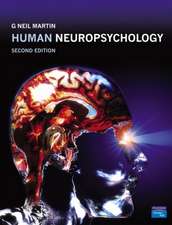Interpersonal and Intrapersonal Expectancies
Editat de Sławomir Trusz, Przemysław Bąbelen Limba Engleză Paperback – 23 mai 2016
Interpersonal and Intrapersonal Expectancies provides a theory, a research review, and a summary of the current knowledge on intra- and interpersonal expectancy effects and related phenomena. Based on extensive study, and written by eminent experts from some of the world’s leading academic institutions, the book presents the most recent knowledge on social and psychological mechanisms of forming both intra- and interpersonal expectancies. It also considers how expectancies are sustained and what their consequences are, as well as discussing the latest theoretical concepts and the most up-to-date research on expectancy effects.
This book represents the first review of the phenomenon of interpersonal expectancies in over 20 years, and the only publication presenting a complementary view of both intra- and interpersonal expectancies. It aims to open up a discussion between researchers and theoreticians from both perspectives, and to promote an integrative approach that incorporates both.
| Toate formatele și edițiile | Preț | Express |
|---|---|---|
| Paperback (1) | 442.68 lei 6-8 săpt. | |
| Taylor & Francis – 23 mai 2016 | 442.68 lei 6-8 săpt. | |
| Hardback (1) | 1162.08 lei 6-8 săpt. | |
| Taylor & Francis – 24 mai 2016 | 1162.08 lei 6-8 săpt. |
Preț: 442.68 lei
Nou
Puncte Express: 664
Preț estimativ în valută:
84.73€ • 92.07$ • 71.22£
84.73€ • 92.07$ • 71.22£
Carte tipărită la comandă
Livrare economică 22 aprilie-06 mai
Preluare comenzi: 021 569.72.76
Specificații
ISBN-13: 9781138118935
ISBN-10: 1138118931
Pagini: 202
Ilustrații: 2
Dimensiuni: 156 x 234 x 25 mm
Greutate: 0.29 kg
Ediția:1
Editura: Taylor & Francis
Colecția Routledge
Locul publicării:Oxford, United Kingdom
ISBN-10: 1138118931
Pagini: 202
Ilustrații: 2
Dimensiuni: 156 x 234 x 25 mm
Greutate: 0.29 kg
Ediția:1
Editura: Taylor & Francis
Colecția Routledge
Locul publicării:Oxford, United Kingdom
Public țintă
Postgraduate and UndergraduateCuprins
List of figures. List of contributors. Acknowledgements. Two perspectives on expectancies, An introduction. Part 1: Expectancies for self. Preface - Expectancy about self. 1. Response expectancy 2. The story of motivational concordance 3. Self-Efficacy 4. Hypnosis, memory, and expectations 5. Generalized expectancies for negative mood regulation: Development, assessment, and implications of a construct 6. Smoking-Related expectancies 7. Response expectancy and cancer care 8. How expectancies shape placebo effects Part 2: Expectancies for others. Preface - Expectancy about others 9. When and why do expectations create reality? Reflections on behavioral confirmation in social interaction 10. Identity negotiation in social interaction: Past, present and future 11. Motivation Matters: The functional context of expectation confirmation processes 12. Why accuracy dominates self-fulfilling prophecies and bias 13. Understanding the connections between self-fulfilling prophecies and social problems 14. Pygmalion, and the classroom, after 50 years 15. Children’s awareness of differential treatment: Toward a contextual understanding of teacher expectancy effects 16. Individual differences in reponse to expectations 17. High and low expectation teachers: The importance of the teacher factor 18. Inaccurate teacher expectations: Relationships with student and class characteristics and its effect on long-term student performance. Expectancy effects: An attempt to integrate intra- and interpersonal perspectives
Notă biografică
Sławomir Trusz - Assistant Professor of Education, Institute of Educational Sciences, Pedagogical University of Kraków, Poland.
Przemysław Bąbel - Assistant Professor of Psychology, Institute of Psychology, Jagiellonian University, Kraków, Poland.
Przemysław Bąbel - Assistant Professor of Psychology, Institute of Psychology, Jagiellonian University, Kraków, Poland.
Descriere
The first survey in a generation of the field of interpersonal and intrapersonal expectancies: the seeds of research in this area, the current state of the art, its practical applications, and the directions future investigations should take. An important reference for researchers and students in social, health, educational, and clinical psychology.
















